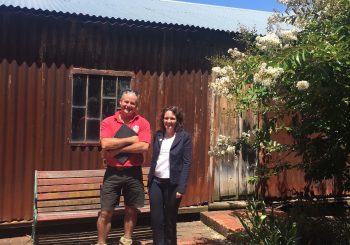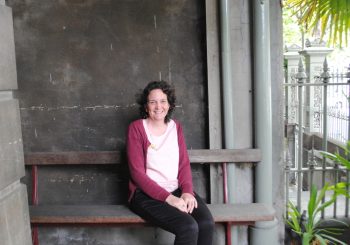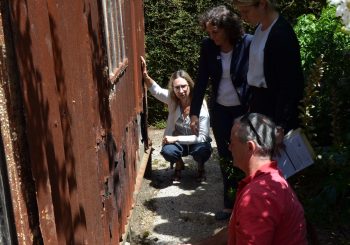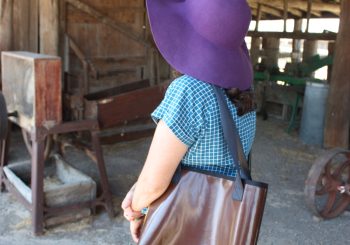-
Peeling back the layers: Samantha Westbrooke
Posted on March 7, 2018 Samantha Westbrooke, Conservation Architect, National Trust of Australia (Victoria)
Samantha Westbrooke, Conservation Architect, National Trust of Australia (Victoria)“We need to use our heritage buildings and celebrate them, keep them active for all to enjoy and learn from”
What is your job? I am the Conservation Architect for the National Trust of Australia (Victoria). I provide architectural conservation advice on the repair, restoration and development of properties owned and managed by the Trust in Victoria (39 properties), prepare conservation works schedules for buildings, co-ordinate conservation works projects at our properties, promote best conservation practice in the organisation and provide advocacy to the wider community about best conservation practice.
How long have you been working for the organisation?
Four years.
What inspires you most about what you do?
Working with amazing heritage buildings and uncovering their diverse details and the stories behind their construction, inhabitants and changes over time and being able to share these stories with the wider community. I am inspired to reveal the many layers and I love seeing the process of restoration and/or activation of our heritage properties – seeing them come back to life and being used and engaging a diverse range of people. I am also inspired by good design that fits really well with heritage buildings but that will be the heritage of the future showing design and innovation from the 21st century. I like to pass on my passion for heritage buildings and sites so they are seen as an opportunity rather than a constraint to good design and innovation.
In Australia we are losing the tradespeople who use traditional methods to work on our heritage buildings, with very few young people carrying on the work of those near retirement. I am inspired to make sure this does not happen. I want to nurture the traditional trades community so young tradespeople are instilled with the passion to work on our heritage buildings.
Why do you think your work is so important?
It is so important that we value and conserve our heritage buildings as they tell us so much about who we are and where we have come from. It is important to have them in use and activated so they can demonstrate the important layers and stories of our history that would otherwise not be told.
It is also really important to ensure that appropriate repair and conservation methods are used on our heritage buildings so the buildings are preserved into the future and so we don’t lose the skills of the traditional trades. In my job as a conservation architect, I am often recommending reversal of previous repairs that are doing damage to heritage buildings and making sure that appropriate materials and methods (traditional methods) are used in any future restoration.
It is so important that we undertake sympathetic development and appropriate restoration that does not obscure the history of materials, past industry and how we lived but that brings our buildings into the 21st century with innovative design of conversions and additions that will be the heritage of the future, reflecting our current culture and design thinking. Promoting good design that respects the past but creates the heritage of the future.
We need to use our heritage buildings and celebrate them, keep them active for all to enjoy and to learn from them.
What’s it like working as a woman in your organisation?
Generally at the staff level, there are no barriers to being a women in the organisation and I am respected for my skills and expertise regardless of my gender. However I feel that I do face discrimination from the older generations in the volunteer and membership base who are a bit taken aback by having a woman in a role like mine and are less willing to take direction from a woman in a senior role regardless of their qualifications.
Do you think the industry you work in has changed over the last 100 years for women?
Yes, I think it has changed in some areas but not others. As an architect, I feel like there are a lot more women in the architecture profession than 100 years ago, particularly in conservation architecture. There appears to be an even balance of males to females in senior architecture roles. However when it comes to tradespeople, I rarely come across a female tradesperson and this area has changed very little in 100 years it seems. This is not the case for conservators in the decorative arts and materials conservation, which once again is now a lot more balanced with a number of women in these conservator professions.
What question would you like to ask another inspirational woman from one of our international organisations?
How important have strong female role models played in the development of your career?
What is the National Trust of Australia (Victoria)?
The National Trust of Australia (Victoria) has grown since 1956 to become the state’s largest community-based heritage advocacy organisation actively working towards conserving and protecting our heritage for future generations to enjoy.
The National Trust is an independent and privately funded organisation and operates many historic properties which are open to the public.
The Victorian National Trust manages 38 properties in the state, 30 of which it owns and has Committee of Management responsibilities for a further eight properties on Crown land. There are 24 National Trust properties regularly open to the public. It also manages the Melbourne Maritime Museum which includes the restored ship the Polly Woodside.

 44 (0)20 7824 7157
44 (0)20 7824 7157



